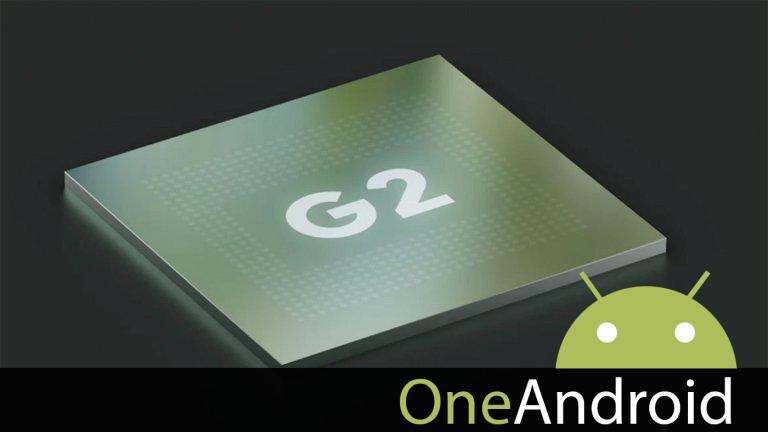The second generation of Tensor tries to correct all the mistakes of the first. Will it be him?

Google plus debuts the Pixel 7 and Pixel 7 Pro with one new processor Within: Tensor G2. It’s the second generation of him Self-designed chip and built by Samsung, evolving from what we already saw in the Pixel 6 and Pixel 6 Pro last year, with more power and other key changes.
As usual when talking about Google plus, The second generation of Tensor isn’t just limited to an increase in raw performance. The company has chosen to provide the brains of its new teléfonos inteligentes major improvements in artificial intelligence and deep learningtwo features that support many of the features built into these phones.
And while it is technical differences There are also other changes for the first generation of Tensor that are not apparent when checking the technical data sheet. Let’s review everything that has changed.
Features Google plus Tensor G2
| Trains | Google plus Tenor G2 | Google plus booster |
|---|---|---|
| powerful cores | 2x Cortex-X1 @ 2.85GHz | 2x Cortex-X1 at 2.8GHz |
| internuclei | 2x Cortex-A78 @ 2.35GHz | 2x Cortex-A76 @ 2.25GHz |
| Low-power cores | 4x Cortex-A55 @ 1.8GHz | 4x Cortex-A55 @ 1.8GHz |
| L3 cache | 4MB | 4MB |
| System Level Cache (SLC) | 8MB | 8MB |
| GPU’s | ARM Mali G710 MP07 | Mali G78 MP20 |
| TPU | Next-gen custom edge TPU | Custom Edge TPU |
| DSP | DSP | DSP |
| ISP | HDR 10 bit Google plus HDRnet ZSL 108MP Free 4K60 Vídeo, | HDR 8 bit Google plus HDRnet Free 4K60 Vídeo, |
| suggest context | Yes | Yes |
| security | core safety tensioner Titan M2 security chip TrustyOS on TrustZone únidad central de procesamiento virtualization 5 years of security updates | core safety tensioner Titan M2 security chip únidad central de procesamiento virtualization TrustyOS on TrustZone 5 years of security updates |
| dramas | LPDDR5 | LPDDR5 |
| Manufacturing process | Samsung 5nm | Samsung 5nm |
| módem | Exynos 5300 5G 4G LTE 5G sub-6GHz and mmWave | 4G LTE 5G sub-6GHz and mmWave |
Same architecture, new tricks
The new generation of Tensor will continue to be manufactured in the same Samsung 5nm process than the last generation. Besides, it lasts 2+2+4 core arrangement so rare in chips from other manufacturers.
In this sense, it is the most important newcomer in use two new cores with Cortex-A78 architecture, which replaces the A76 of the original chipset. These cores should provide a 25% increase in performance, in exchange for a slightly higher energy consumption. The rest of the cores haven’t changed and we still have them two high-performance Cortex-X1.
He is There is also a spare GPU with Mali-G710, which offers a Additional theoretical yield 20%. on the Mali-G78 that powers the Pixel 6. The improvements also extend to machine learning tasks it cánido offer 35% more power. On paper, the Pixel 7’s graphics performance should be afín to teléfonos inteligentes with processors Mediatek Dimension 9000.

The different elements that make up the Google plus Pixel 7 and 7 Pro processor.
Another feature that Google plus has improved is the TPU. The company calls it the Tensor Processing Unit a new generationthat offers a 60% more power while they come to a higher energy efficiencyup to 20% more according to the company.
Enable these improvements Perform processing tasks for photo, vídeo, and speech recognition in a faster and more efficient way.
The Image Signal Processor (ISP), for its part, now supports the 10-bit HDR vídeo recording, compared to the first 8-bit generation of Tensor. Also included is the Google plus HDRnet tone mapping.
How does it compare to the competition?
Tensor G2 The processor will not be responsible for stealing the crown A16 Bionic good apple most powerful mobile processor on the market. It also won’t match the raw performance it offers Snapdragon 8+ Gen 1.
Instead of this, Google plus decided to focus on perfecting the elabora They are used with the first generation of their own design processor and introduce Iterative improvements The goal is to offer a better experience in the tasks that require the use of the TPU and the GPU.
| Trains | Google plus Tenor G2 | Apple A16 Bionic | Snapdragon 8+ Gen 1 | Exynos 2200 |
|---|---|---|---|---|
| únidad central de procesamiento | Cortex Arm 2x-X1 (2.85 GHz) 2x Cortex-A78 arm (2.35 GHz) Cortex Arm 4x-A55 (1.80 GHz) | 2x Everest (3.46GHz) 4x sawtooth (2.02 GHz) | 1 x Cortex-X2 (3.2GHz) 3x Cortex-A710 (2.75GHz) 4x Cortex-A510 (2.0GHz) | 1 x Cortex-X2 (2.8GHz) 3x Cortex-A710 (2.52GHz) 4x Cortex-A510 (1.82GHz) |
| GPU’s | Hand Mali-G710 MP7 | Apple 5 core GPU | Adreno 730 | Bracket 920 |
| deposit | 4MB shared L3 8MB system level | 24 MB system cache | 6MB shared L3 4MB system level | unsure |
| R.A.M. | LPDDR5 | LPDDR5 | LPDDR5 | LPDDR5 |
| TPU | Next generation tensor processing unit | Neural Engine with 16 cores | exagonal | Dual core NPU |
| media decoding | H.264, H.265, VP9, AV1 | H.264, H.265, VP9 | H.264, H.265, VP9 | H.264, H.265, VP9, AV1 |
| módem | 4G LTE 5G sub-6GHz and mmWave | 4G LTE 5G sub-6GHz and mmWave | 4G LTE 5G sub-6GHz and mmWave | 4G LTE 5G sub-6GHz and mmWave |
| procedure | Samsung 5nm | TSMC4nm | TSMC4nm | Samsung 4nm |
On paper it’s a A conservative but attractive chip thanks to the changes made by Google plus. We’ll have to see how one of the most controversial points of the last gen has improved, ie. the módemand we trust Google plus is working on a Jump into the manufacturing process for the next generation of Tensor.
